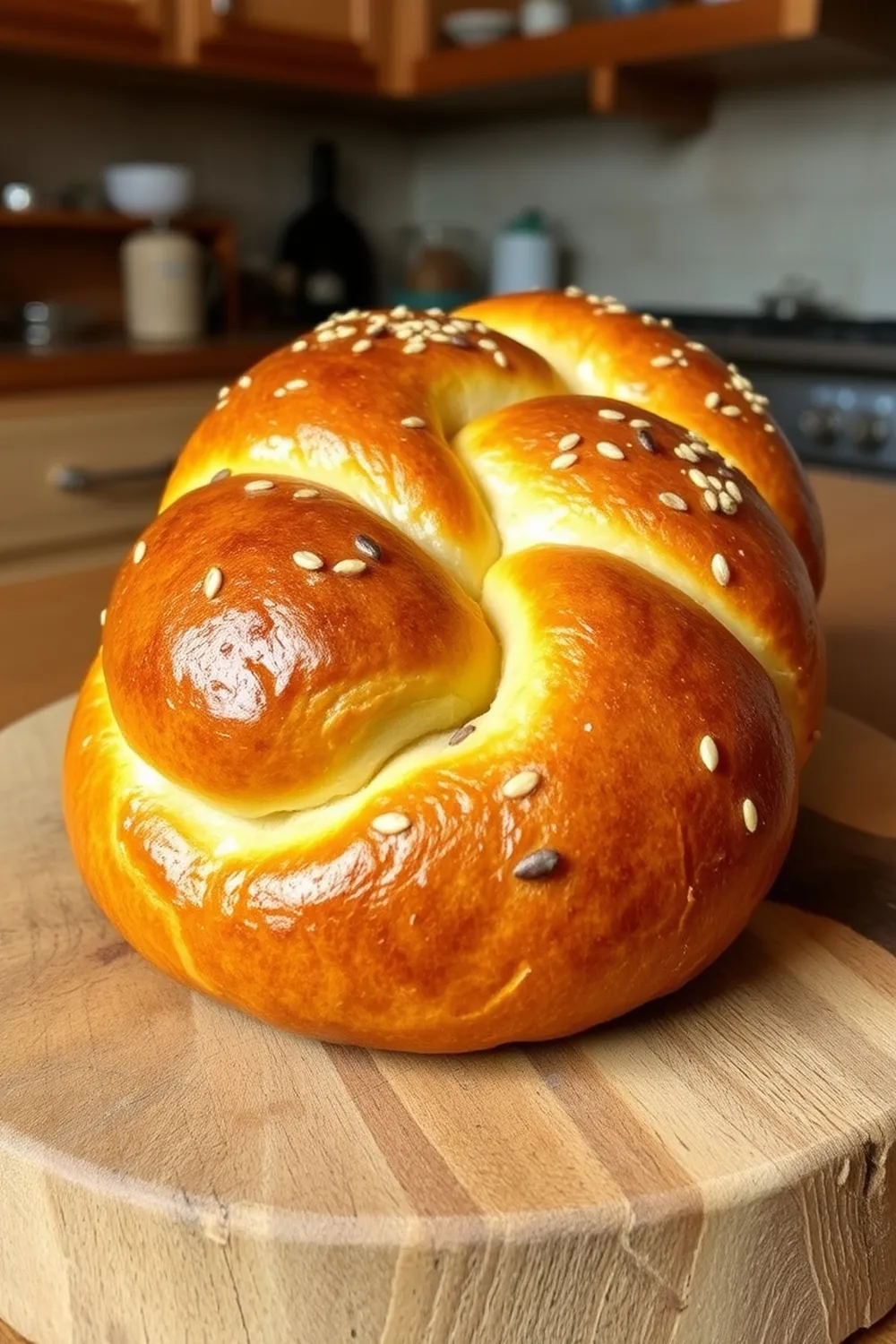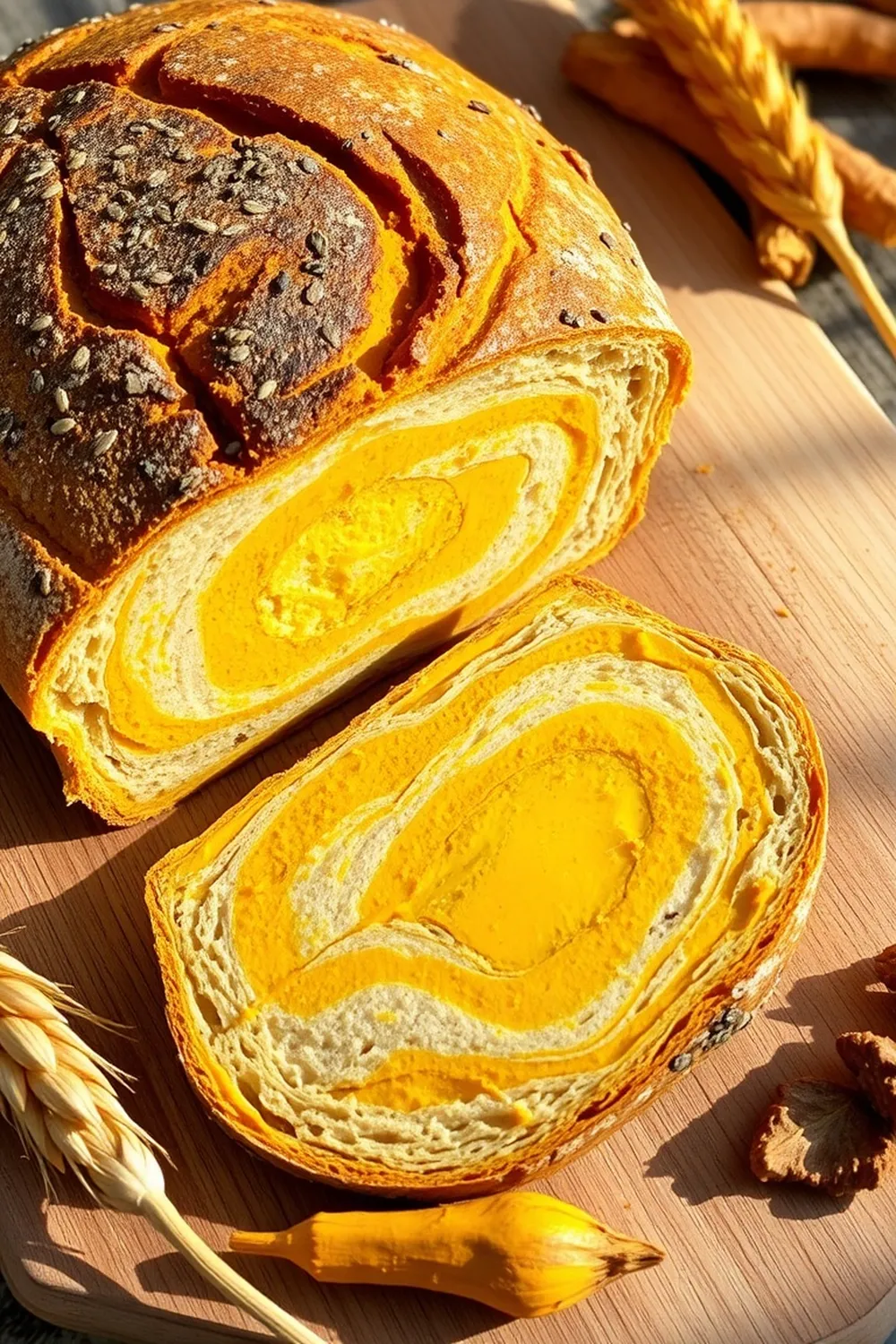- Prepare the leaven by mixing sourdough starter, bread flour, spelt flour, and water. Allow it to ferment for 4-5 hours, or until doubled in size.
- Autolyse the dough by combining bread flour, spelt flour, and water. Rest for 30-60 minutes.
- Mix in the leaven, then after 30 minutes, add salt and the remaining water. Mix well and rest the dough for 30 minutes.
- Perform stretch and folds every 30-60 minutes for 2-3 hours.
- Perform coil folds twice at 1-hour intervals.
- Laminate the dough by spreading it into a rectangle, sprinkling with cheese and rosemary, and folding it like a letter.
- Perform a final coil fold after lamination.
- Shape the dough into a round boule and place it in a well-floured proofing basket.
- Refrigerate the dough for 12-18 hours for cold fermentation.
- Preheat the oven with the Dutch oven inside. Carefully score the dough, bake covered for 20-25 minutes, then uncovered until golden brown.
- Calories:195 kcal25%
- Energy:815 kJ22%
- Protein:15 g28%
- Carbohydrates:75 mg40%
- Sugar:2 mg8%
- Salt:450 g25%
- Fat:12 g20%
Last Updated on 4 months by Neha Deshmukh
Rosemary & Colby Jack Sourdough Bread Recipe – Step-by-Step Guide
Hey everyone! There’s just something magical about the smell of freshly baked sourdough wafting through the house, isn’t there? I’ve been experimenting with sourdough for a while now, and this Rosemary & Colby Jack Sourdough is a recent favorite. It’s a little bit savory, a little bit cheesy, and so satisfying. I first made this for a cozy Sunday brunch with friends, and it disappeared in minutes! Let’s get baking.
Why You’ll Love This Recipe
This isn’t your average sourdough. The rosemary adds a beautiful aromatic quality, and the Colby Jack cheese melts into gooey pockets of deliciousness. It’s a bit of a project, yes, but the incredible flavor and texture are so worth the effort. Plus, sourdough is naturally fermented, which some say makes it easier to digest. It’s a win-win!
Ingredients
Here’s what you’ll need to create this masterpiece:
- 15g sourdough starter
- 40g bread flour
- 10g spelt flour
- 50g water
- 400g bread flour
- 50g spelt flour
- 90g leaven (from the starter mixture)
- 345g water
- 106g Colby-Jack Cheese
- 1g Rosemary (fresh is best!)
- 9g salt
Ingredient Notes
Let’s talk ingredients! A few little tips to make sure everything comes together perfectly:
- Sourdough Starter Maintenance: A happy starter is a bubbly starter! Make sure yours is active and doubled in size before using it. I usually feed mine 4-6 hours before I plan to bake.
- Bread Flour vs. All-Purpose: Bread flour has a higher protein content, which helps develop gluten and gives your bread that lovely chew. You can use all-purpose in a pinch, but the texture won’t be quite the same.
- Spelt Flour Benefits: Spelt flour adds a subtle nutty flavor and a softer crumb. It’s also a bit easier to digest for some people. Don’t have spelt? You can substitute with more bread flour, but the flavor profile will change.
- Colby-Jack Cheese Regional Variations: Colby-Jack is a classic American cheese, but you can find variations depending on where you are. Feel free to experiment with other melting cheeses like Monterey Jack or even a mild cheddar.
- Fresh Rosemary vs. Dried: Fresh rosemary is always best, offering a brighter, more fragrant flavor. If you only have dried, use about 1 teaspoon, but remember it’s more concentrated, so don’t overdo it!
Step-By-Step Instructions
Alright, let’s get down to business!
- Prepare the Leaven: In a small bowl, mix together the 15g sourdough starter, 40g bread flour, 10g spelt flour, and 50g water. Cover and let it ferment at room temperature for 4-5 hours, or until it has doubled in size. This is your leaven – the powerhouse of flavor!
- Autolyse the Flour: In a large bowl, combine the 400g bread flour and 50g spelt flour with 345g water. Mix until just combined – don’t knead! Cover and let it rest for 30 minutes. This process, called autolysing, helps develop gluten and makes the dough easier to work with.
- Mix in the Leaven: Add the 90g leaven to the flour mixture and mix well. Let it rest for another 30 minutes.
- Add Salt & Water: Now, add the 9g salt and remaining water. Mix until everything is incorporated.
- Stretch and Folds: This is where the magic happens! Over the next 3 hours, perform stretch and folds every hour. This strengthens the gluten and develops the dough’s structure. To do this, gently stretch a portion of the dough upwards and fold it over itself. Rotate the bowl and repeat 4-5 times.
- Coil Folds: After the stretch and folds, perform two coil folds at 1-hour intervals. This further strengthens the dough.
- Lamination Time: Gently spread the dough into a rectangle. Sprinkle the 106g Colby-Jack cheese and 1g rosemary evenly over the surface. Fold the dough like a letter, then gently roll it into a log.
- Final Coil Fold: Give the dough one final coil fold after lamination.
- Bulk Fermentation & Cold Proof: Shape the dough into a round boule (ball). Place it in a well-floured proofing basket. Cover and refrigerate for 14 hours for a cold fermentation. This develops the flavor and makes the dough easier to score.
- Bake It!: Preheat your oven to 250°C (482°F) with a Dutch oven inside for at least 30 minutes. Carefully remove the hot Dutch oven, place the dough inside (score the top with a sharp knife or lame first!), cover, and bake for 20 minutes. Then, remove the lid and bake for another 25-30 minutes, or until the crust is golden brown.
Expert Tips
Want to take your sourdough game to the next level? Here are a few of my go-to tips:
- Optimal Rise: A warm environment helps with rising, but don’t let it get too warm, or the yeast will work too quickly.
- Scoring Techniques: Scoring the dough allows it to expand properly in the oven. A sharp knife or lame is essential. Experiment with different patterns!
- Dutch Oven Usage: The Dutch oven creates a steamy environment, which helps the bread develop a crispy crust.
- Dough Hydration: This dough is fairly high hydration. Don’t be afraid to get your hands a little sticky!
Variations
Feeling creative? Here are a few ways to customize this recipe:
- Vegan Adaptation: Substitute the Colby-Jack cheese with a vegan mozzarella alternative.
- Gluten-Free Adaptation: Use a gluten-free bread flour blend. You may need to adjust the hydration level. My friend, Sarah, swears by Bob’s Red Mill 1-to-1 Gluten Free Baking Flour.
- Spice Level: Add a pinch of chili flakes for a little kick! My husband loves this addition.
- Festival Adaptation: For Christmas or the holidays, add a blend of rosemary, thyme, and sage. It smells divine!
Serving Suggestions
This bread is amazing on its own, but it’s even better with…
- A hearty bowl of soup
- A simple cheese and charcuterie board
- Toasted with a smear of butter and a drizzle of honey
Storage Instructions
Store leftover bread in an airtight container at room temperature for up to 3 days. You can also freeze it for longer storage.
FAQs
Got questions? I’ve got answers!
- What is the ideal hydration level for this dough? Around 75-80% is perfect.
- Can I use a different type of cheese? Absolutely! Monterey Jack, cheddar, or even Gruyère would work well.
- How do I know when my sourdough starter is active enough? It should have doubled in size and be bubbly.
- What if I don’t have a Dutch oven? You can bake the bread on a baking sheet, but you’ll need to create steam in the oven by placing a pan of hot water on the bottom rack.
- Can this dough be made without spelt flour? Yes, you can substitute with more bread flour, but the flavor will be slightly different.










